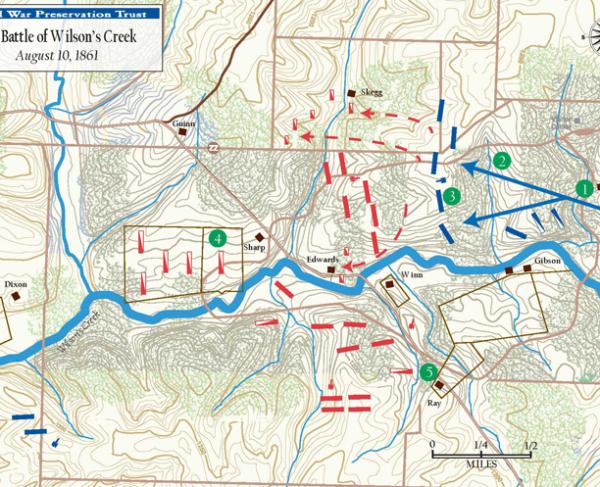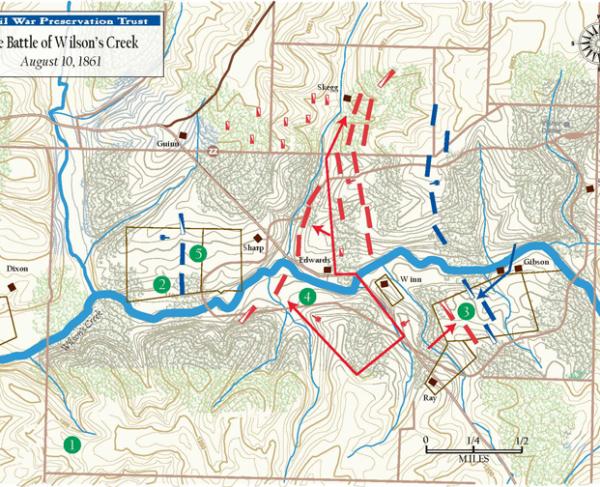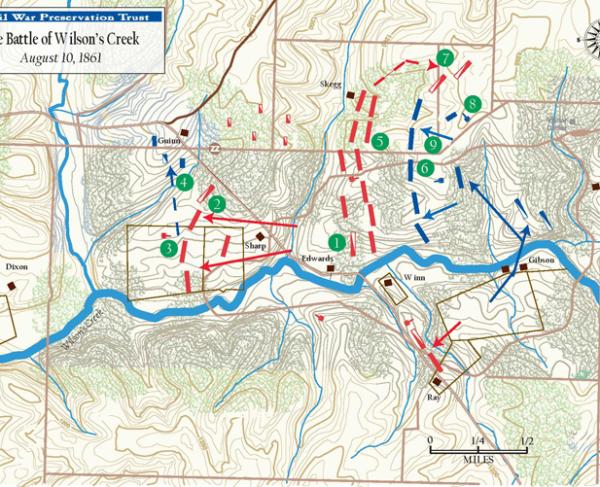The Ray House at Wilson's Creek
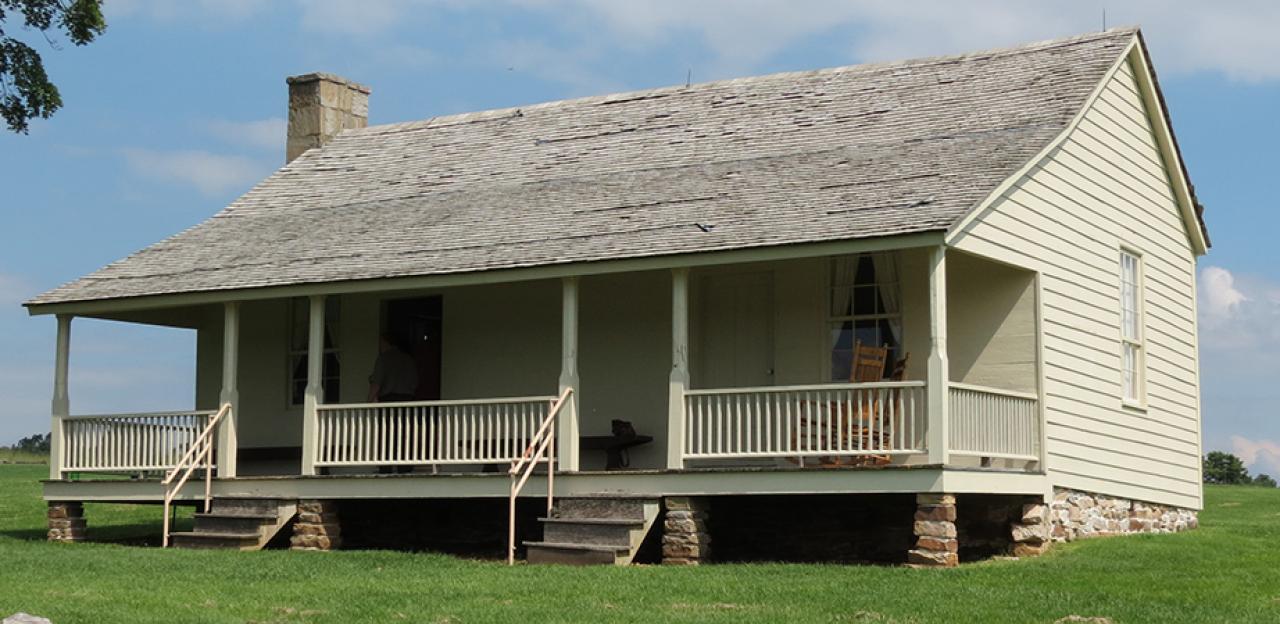
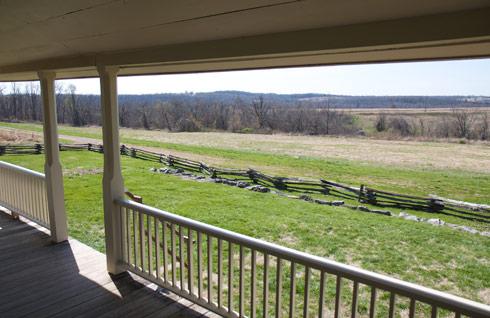
By August 1861 many families had settled in the Wilson Creek area (now known as Wilson’s Creek). Families such as the Gibsons, who owned and operated a grist mill, the Manleys, the Sharps, the Shorts, and the Edwardses whose house was the site of Southern headquarters during the August 10th battle. The most prominent family in the area was that of John and Roxanna Ray whose house served as a hospital during and after the Battle of Wilson’s Creek.
John Ray migrated to Missouri from Tennessee in the late 1840s. When he moved to Missouri he already was a widower and he brought his daughter Elizabeth with him. Roxanna Gizzard, a Georgian, married William Steele in 1837 and the couple migrated to Missouri in 1840. William Steele died in 1848 and Roxanna was left with four children to rear. Women were in short supply on the frontier and John Ray began courting the Widow Steele within a year of her husband’s death. The two were married in 1849 and by the time of the August 10th battle at Wilson’s Creek Roxanna had given birth to six more children. After marrying Roxanna, John Ray purchased the 120 acres of the Steele estate along with two slaves previously owned by William Steele.
With a new child being born almost every year the Rays quickly outgrew their home and John Ray decided to purchase the 40 acres adjacent to the old Steele estate.
After purchasing the land, construction on the new house began almost immediately and was finished by 1852. John Ray and his family were living in this new house when he was appointed postmaster of the Wilson Creek Post Office on January 18, 1856, a position he held for ten years. Because his house served as the Post Office, the Ray home was the hub of the little community that inhabited the area around Wilson Creek. The Ray house also happened to sit right along the Telegraph or Wire Road which was the major thoroughfare for all traffic military and civilian in the 1850s and 1860s. The Butterfield Overland stage began using the Wire Road in 1859 as its route from Tipton, Missouri to San Francisco, California, so the Ray family had a firsthand look at pioneers headed west for the next two and a half years. The stage route was discontinued in 1861 due to the Civil War.
The Civil War had begun in Missouri and Kansas, according to some, in 1854 with the passage of the Kansas-Nebraska Act. Missouri was already in the Union as a slave state and Kansas wanted to come into the Union as a free state, and so the border area between the two was ripe for conflict. Raiders from both states traveled back and forth pillaging, plundering, and killing. When the Civil War officially began, it gave those folks a legal excuse to continue the depravities they had begun in 1854. The Rays were aware of the impending military activity as they conducted their daily routines in August of 1861. By August 9th a Southern army of over 10,000 troops was camped all along Wilson Creek. On the morning of August 10th, some of the Ray children were outside tending to their horses when a Confederate soldier told them to take shelter because there was going to be a fight. All of the Ray family including their slave Rhoda and her four children took shelter in the cellar where they stayed for the entire six-hour battle. John Ray sat on the front porch throughout the battle and observed the action in his cornfield and the continuing action on what became known as Bloody Hill.
Injured and dying men began to be brought to the Ray House almost from the time the battle began. Union artillerymen atop Bloody Hill could see Southern forces regrouping at the Ray House and fired upon them. The shot struck a chicken coop in the backyard at the Ray House and as a result a yellow hospital flag was raised and firing on the house ceased.
When the firing ceased, Mrs. Ray and Rhoda went to work carrying water to the wounded and dying. Surgery was performed on many a wounded man in the Ray House yard and the women assisted the doctors with water, towels, bandages, and whatever else they could provide.
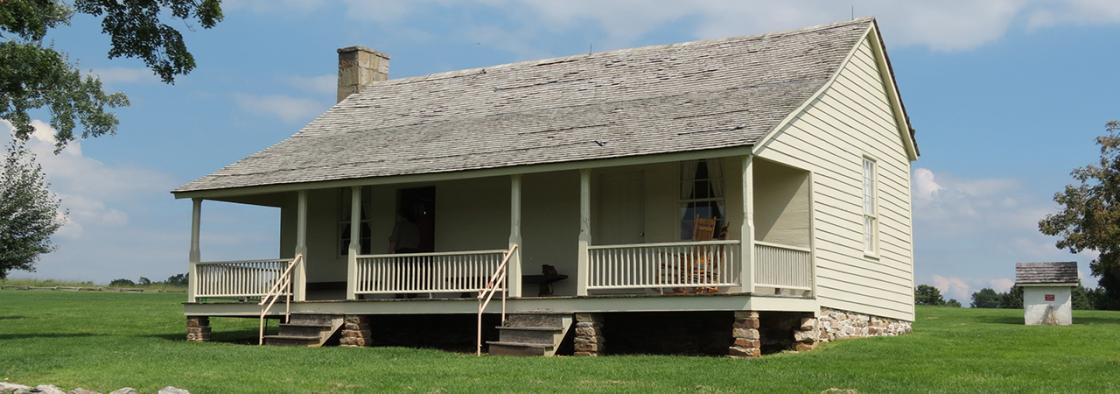
The Union commander, General Nathaniel Lyon, had been killed on Bloody Hill and his body was eventually brought to the Ray House. The body was escorted by Dr. S.H. Melcher of the 5th Missouri (Union) and placed on a bed inside the house where Melcher examined it for wounds. After noting the wounds and cleaning Lyon’s body, the general was covered with a counterpane kindly furnished by Mrs. Ray. The body was then escorted into Springfield to the home of John and Mary Phelps. It was not long before ambulances began to arrive to evacuate the wounded to hospitals closer to their homes. The Southern dead were buried immediately but some of the bodies of the Federals remained on the field for as long as six days after the battle. The soldiers, during their brief stay in the area, made off with practically everything the Ray family had prepared to get them through the winter. Horses, hogs, chickens, and grain were all gone, and the winter of 1861 would be a rough one for not only the Ray family but the rest of the local residents.
The Ray House survived the rest of the Civil War and the Rays continued to reside there. John Ray died in 1875 and Roxanna in 1876. The house was sold in 1876 to Matthew Alexander who occupied it until 1882. In 1882 the property was sold to James M. Ryrie, who established a mining company in the area. In 1905 John M. McConnell purchased the building and the remaining acreage and it stayed in the McConnell family until 1960 when Wilson’s Creek National Battlefield was established. Bessie McElhaney, daughter of John McConnell who died in 1934, was living in the house at the time the Battlefield was established. Mrs. McElhaney’s son Glen married Dorothy Stewart in 1937 and she is the great-granddaughter of John Ray. Glen and Dorothy lived in the Ray House for a time with Bessie McElhaney as did their daughter Glenna who was born in 1943.
When Wilson’s Creek National Battlefield was established in 1960, Bessie McElhaney was allowed to continue to live in the Ray House while her new home was being constructed. When she moved, a fence was placed around the house for protection. The NPS was also able to acquire from Bessie McElhaney not only the bed that General Lyon’s body had been placed upon when it was brought to the Ray House but also the counterpane Roxanna Ray placed over the body before it was transported to Springfield. That bed is still on display in the Ray House, and the counterpane is on display in the park’s Visitor Center. It was not until the early 1980s that the National Park Service secured the funding to restore the Ray House to its 1861 appearance. The front two rooms still consist of almost three-quarters original material, including the fireplace in one front bedroom. The kitchen and back room contain more reproduction items that can be used for interpretive presentations during tours.
Today the Ray House provides visitors to Wilson’s Creek National Battlefield with a glimpse into the past. The house is open in the spring months for school groups and during the summer as staff permits. Of course, modifications have taken place, a fire detection and suppression system, a carpet runner to protect the 140-year-old floorboards, and an alarm system have been added and are necessary for the safety and security of the structure.
This past Memorial Day the author had the opportunity to interview Dorothy McElhaney and her daughter Glenna and tour the Ray House with them. Mrs. McElhaney was born in 1910 and I can only dream of being as astute as she is when I reach her age. I was thrilled to confirm information that I had gathered through the years by listening and learning from these two delightful ladies. The two ladies were gracious enough to spend one whole day with me talking about their memories of the Ray House and the accounts their parents and grandparents had told them about the Battle of Wilson’s Creek. Their stories of the Ray House and its occupants both during and after the battle will live on in perpetuity.
Related Battles
1,235
1,095
